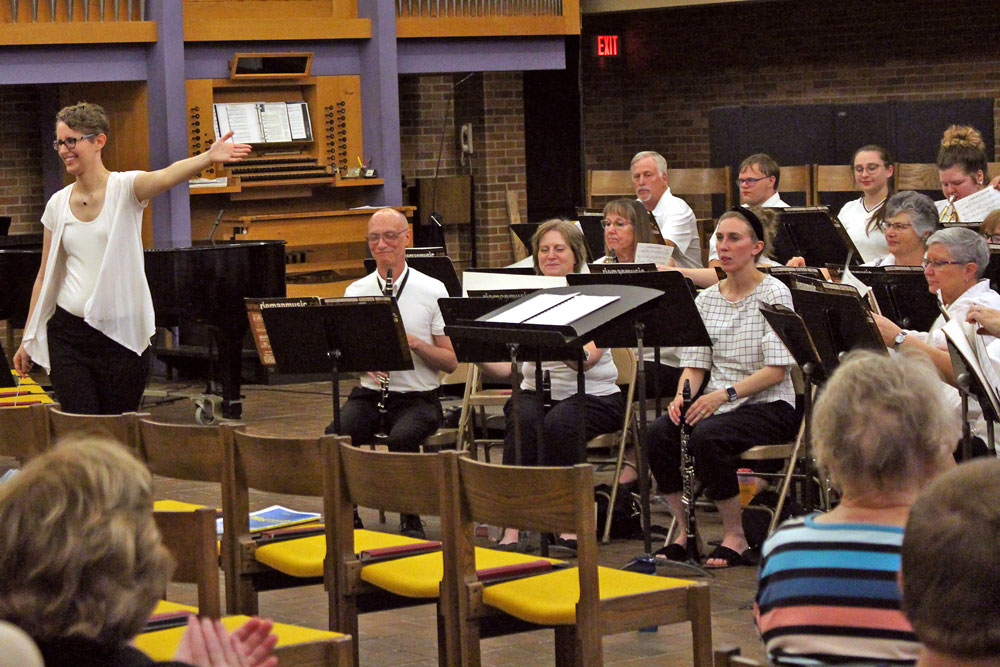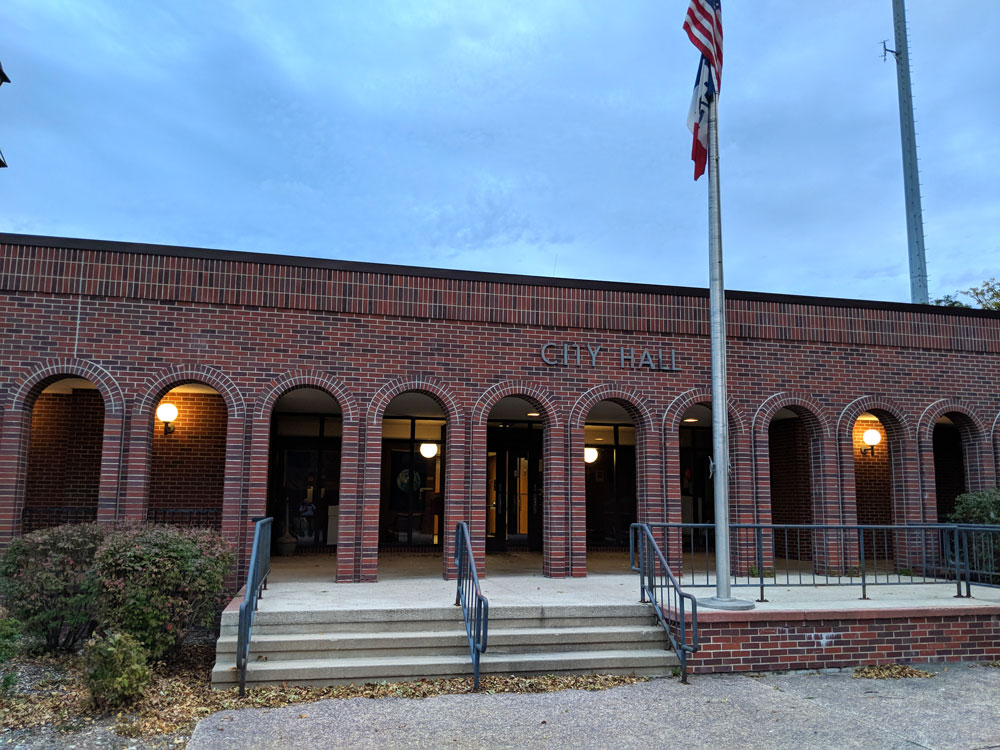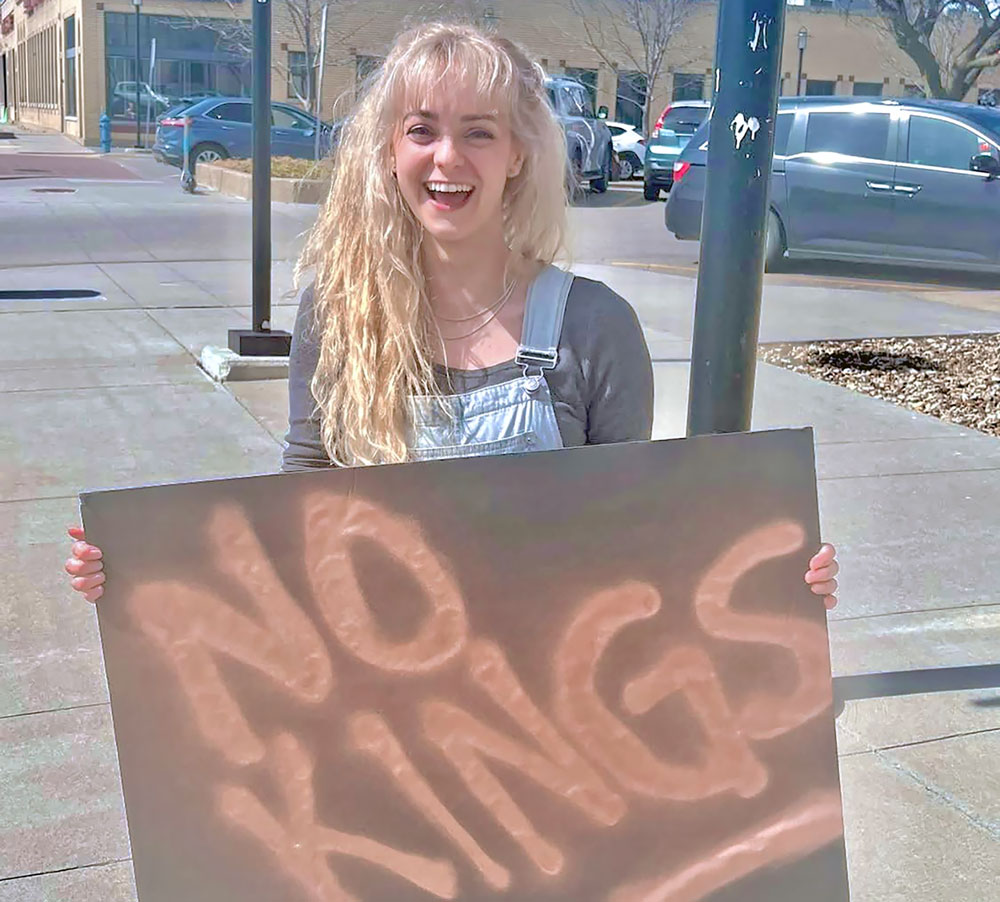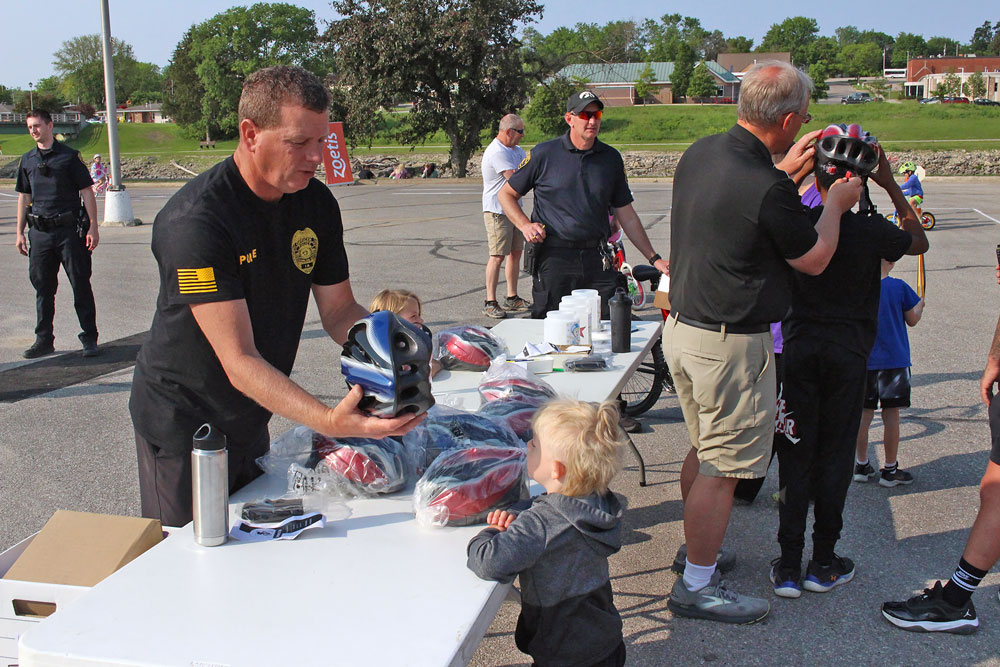HISTORY: Charles City’s first settler drawn by river, timber
Charles City today sits on the site of what was once a Winnebago Indian village, and over the years has witnessed the birth of one of the first gasoline traction engines for agricultural and industrial use in the United States; the invention of the first widely-used poultry vaccine; the growth of a national women’s rights leader; and the miraculous rebound from a devastating killer tornado in 1968 that forever changed the face of the community.
Joseph Kelly is believed to be the first white settler to the area, arriving in 1851. A hunter and miller by trade, Kelly saw the land that would become Charles City as an ideal setting for a town, with its river crossing — known as the “ford” — availability of water from the Cedar River for power and an ample supply of timber.
His vision was borne out a year later with the arrival of 25 settler families. Kelly built a saw and grist mill and furnished lumber to the early settlers, including John Blunt, who is credited for building the first house on the east side of the river. Dr. Robert Freeman is credited for the first white development on the west side of the river, operating a store and post office (where McDonald’s restaurant now stands) in what was known for a while as the Village of Freeman.
As it turned out, Charles City was named after Joseph Kelly’s son, Charles. However, it took several name changes before the current one was settled upon. The first name, Charlestown, was changed after it was discovered that there was already a settlement in the state by that name. So it became known as St. Charles, only that too, it was later learned, was a duplication. So in 1860, the name St. Charles City was given, which was later shortened by the newspaper and Post Office to just “Charles City.”
Floyd County, meanwhile, was established in January of 1851 and officially organized as of August of 1854. The most widely-held belief is that the county was named for Sgt. Charles Floyd, a member of the famed Lewis and Clark Expedition, who died in 1804 during the trip and was buried just south of present day Sioux City. His death and burial are the first ever recorded in Iowa.
Others hold that Floyd County was named in honor of William Floyd of Long Island, N.Y., one of the signers of the Declaration of Independence. Still others believed it to have been named after former Virginia governor and Secretary of War, John Buchanan Floyd. Because of that belief, some tried to have the county’s name changed after Floyd joined the Confederate Army as a general during the Civil War. That effort was aborted, though, after Senator John F. Duncombe of Fort Dodge assured people that the county was indeed named after Charles Floyd.
The first election of county officers took place on Aug. 7, 1854, with a total of 85 votes cast. Townships were established later that same year, while the first county court was held in a frame house located on Kelly Street.
The county seat was originally established as being St. Charles (Charles City), but was moved five miles west of town to nearby Floyd for a short time following a hotly contested battle in 1857, because Floyd was the geographical center of the county. That decision was ultimately overturned by the Iowa Supreme Court in 1859, and the county seat relocated back to Charles City.
In 1881, the Floyd County Courthouse in Charles City burned down, and the question of where to have the county seat was revived. Despite a strong effort to move it to Floyd, Charles City weathered the storm and kept its place as the county seat of Floyd County and has held on to that distinction to this day.
Among the more notable events in the history of Charles City are the establishment of the Hart-Parr Company in 1900-01, at which the first Hart-Parr gasoline traction engine was developed. Sales manager W.H. Williams decided that “gasoline traction engine” was too big a mouthful, and came up with the name “tractor.”
Hart-Parr was bought out by James Oliver, who invented the chilled plow in 1855, and it eventually became known as the Oliver Farm Equipment Company, and later as the Oliver Corporation. In 1960, Oliver was bought out by the White Motor Corporation, and following the farm economy crisis and Chapter 11 Bankruptcy, was acquired by Allied Products Corporation and renamed the White-New Idea Equipment Company.
At its peak, the tractor plant employed 2,600 workers in the mid-1970s. That number slowly shrank to around 420 employees in 1992 when Allied announced it would close the plant in the summer of 1993.
Charles City also was home for a while to suffragist Carrie Lane Chapman Catt, a driving force behind the constitutional amendment granting women the right to vote.
According to the Carrie Lane Chapman Catt Girlhood Home and Museum website, Carrie Clinton Lane was born on Jan. 9, 1859, in Ripon, Wis., the second of three children of Lucius and Maria (Clinton) Lane.
When she was 7 years old, her family moved to rural Charles City, where she graduated from high school in 1877.
In 1880, she graduated from the Iowa Agricultural College and Model Farm in Ames (now Iowa State University) at the top of her class, having worked her way through school by washing dishes, working in the school library and teaching, the museum said. She was also the only woman in her graduating class.
After college, she returned to Charles City to work as a law clerk and, in nearby Mason City, as a school teacher and a principal. In 1883, she became one of the first women in the nation appointed superintendent of schools.
She became a key coordinator of the women’s suffrage movement, according to the museum. A skillful political strategist, she revitalized the National American Woman Suffrage Association and played a leading role in its successful campaign to win voting rights for women. In 1920 she founded the League of Women Voters upon ratification of the Nineteenth Amendment to the U.S. Constitution.
Her girlhood home has been restored by the National 19th Amendment Society, headquartered in Charles City and is now a tourist attraction.
Also of note was the construction of a 270-foot suspension foot bridge over the Cedar River in 1906, as ordered by the Floyd County Board of Supervisors, to provide access from the east side of the river to the Chautauqua grounds on the west side.
The bridge was built at a cost to the county of $1,200, and turned over to the city for ownership and maintenance.
Up until 2008, when it was destroyed by a record flood, it was the oldest existing suspension bridge in the U.S. and became an iconic symbol of the community. It was placed on the National Register of Historic Places on July 2, 1990. In 2010, it was replaced by a modern cable-stayed bridge designed to honor the old one, yet meet today’s building codes.
Debris from the original bridge was saved and used to build a public sculpture called “Revival” which was placed in Victory Park at the foot of the new bridge this summer.
Other than its history in connection with the tractor, what Charles City is perhaps best known for is being the target of a devastating tornado that hit in the late afternoon of May 15, 1968.
The giant twister was actually two tornadoes that combined into one just southwest of town, then tore through the heart of the community, killing 13 and leaving the downtown area and many residential neighborhoods in ruin.
The storm destroyed 256 businesses, 1,250 homes, resulted in damage costs in excess of $20 million and forever changed the landscape and future direction of the city.
Charles City bounced back, however, through the determination and spirit of its citizens. More than 175 families chose to stay and rebuild after being left homeless by the tornado, having decided Charles City was a pretty good place to live. Another 500 families repaired their homes and, through the assistance of many dedicated people working together, the town rebuilt itself up from the rubble.
What you see today stands as a tribute to their resilience and belief in their community.
Charles City has not only found a way to survive, but to thrive. In 2003, it was named by the Iowa Department of Economic Development as the ‘Tourism Community of the Year.’
In 2004, Charles City was named one of only two ‘Capital Communities’ in the state of Iowa by the Federal Home Loan Bank of Des Moines as a “shining example of communities that have found a way to thrive in rural America.” Charles City was also honored in 2004 by the State of Iowa as an “Iowa Shines Community,” as well as earned one of the first “Cultural District” designations by the state.
What’s more, Charles City has twice been named one of the 10 semi-finalists for the prestigious ‘Great American Main Street Award,’ in 2005 and 2006, recognizing exceptional accomplishments in revitalizing America’s historic and older Main Street commercial districts.
In 2009, Charles City added a national title to its resume by winning its population class in the “America in Bloom” nation-wide community beautification competition. Judges noted in particular the pride residents have in their community and the tremendous volunteer spirit exhibited. Then in 2010, Charles City won the AIB title for an unprecedented second year in a row.
Charles City WhiteWater in Riverfront Park was among seven projects in the nation honored by the U.S. Environmental Protection Agency with a 2013 National Award for Smart Growth Achievement.
The award recognizes the projects’ creative, sustainable initiatives that better protect the health and the environment while strengthening local economies, an EPA news release said.
Specifically, Charles City won the Plazas, Parks, and Public Places award.
After years of fighting against the often-flooded Cedar River, Charles City used land acquired through Federal Emergency Management Agency flood buyouts to create Riverfront Park with a whitewater course.
The flood of 2008, which swept away homes and the communityʼs iconic suspension bridge, delayed the project.
By June 2010 construction began. The plan capitalized on the Cear Riverʼs natural features.
In creating the 1,200-foot whitewater course, a dangerous, old, low head dam was reconfigured and the course designed to send users downstream to calmer waters, rather than trapping them in the swirling current and undertow of the dam. In addition, the riverbanks were remade to be both more natural looking as well as much more accessible to the public. The new features also improved the riverʼs health for local fish species and provided safer access for fishing.
Even before the course was officially dedicated at the end of July 2011, it had become a hotspot for cooling off and whitewater fun. A section of river hardly ever utilized before the reconstruction was suddenly awash in activity as kayakers from all over the region came to “park and play” in the courseʼs three different whitewater features. Tubing the course on inflatable innertubes, rafts and the like quickly became just as — if not even more — popular.
The course hosts two major events each summer: the Iowa Games whitewater competition and the Charles City WhiteWater Challenge.
(Much of the information for this Area History section is courtesy of Marilee Monroe and the Charles City Chamber of Commerce)









Social Share